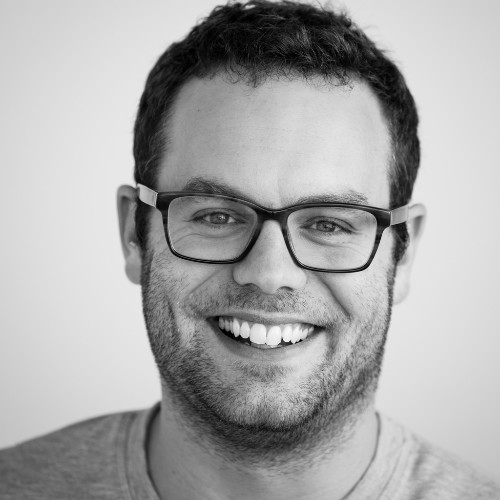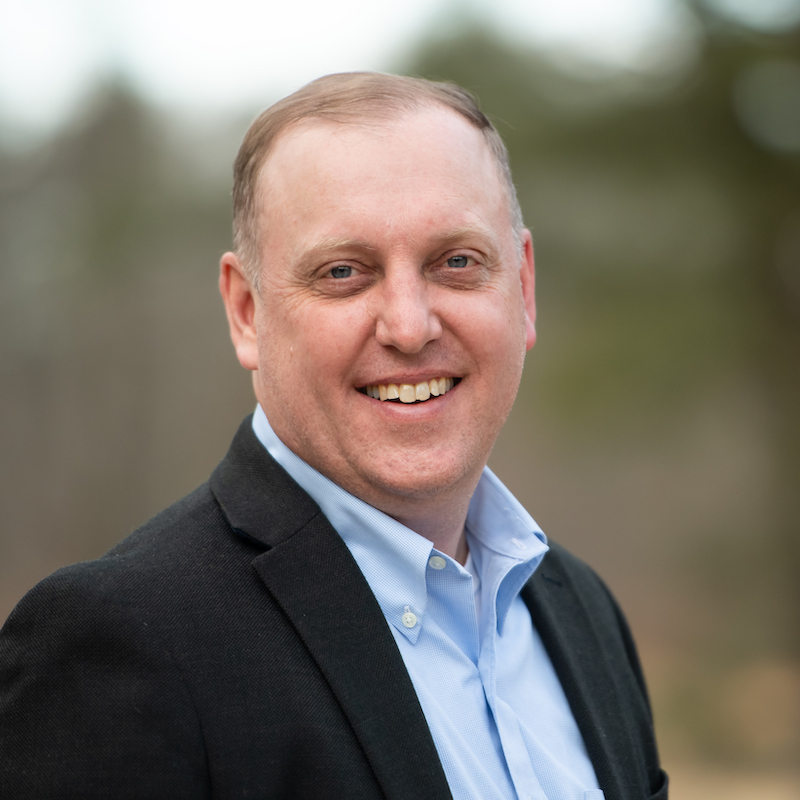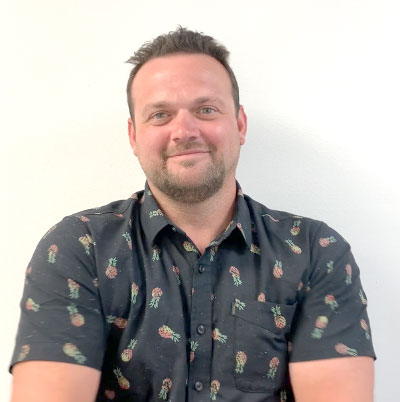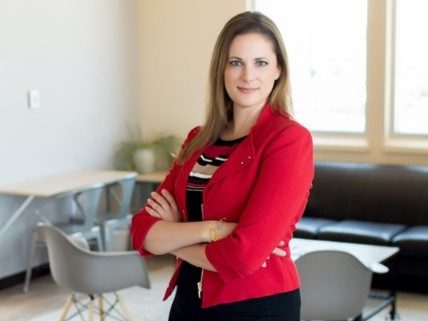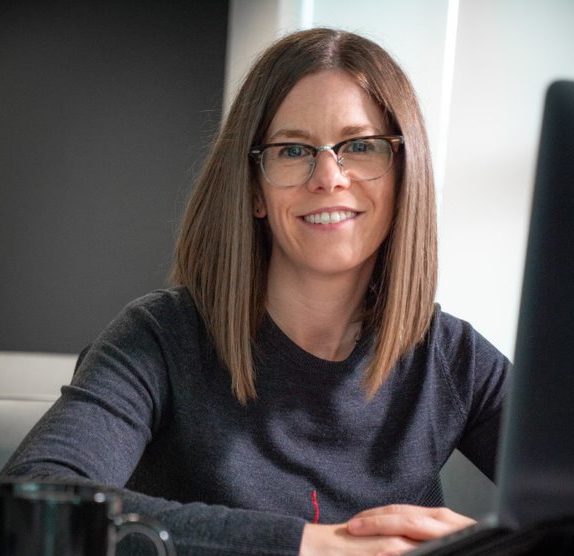The idea of the future of work is immediately filled with images of robots, voice assistants, and advanced automation.
But where are the humans? How will the role of humans change as we go deeper into the future? And what should we be doing now to get ready for that?
Cheryl Cran is the Founder of NextMapping and an expert on the future of work.
People first with a passion for digital
Cheryl says we see technology as the answer to all our problems. As the remote work age rumbles on, automation and technology seems to have replaced humans in the workplace. But have they, really?
Contrary to common belief, we’ve seen a shortage of skilled workers and there are not enough to meet the demands of the current scenario. And so, organizations need to leverage technology to enable humans in the workplace.
People skills, Cheryl says, are at the centere of building great experiences. A skill like emotional intelligence, for example, helps “build a level of intimacy beyond the surface of an interaction” and can be crucial to navigating the future of work.
Predictions for 2021
Cheryl says she successfully predicted that fifty percent of the workplace would be remote by 2020. While she noticed patterns in more employees looking to work remotely, she also saw organizations distance themselves from the idea. But the pandemic forced them to adapt overnight. Organizations will need to see things from multiple perspectives to break through confirmation bias and open themselves up to other possibilities.
Remote work is not going anywhere. And so, hybrid workplaces are the way forward with commercial properties being used in many other ways. She also predicts that more companies are going to find it challenging to recruit and retain employees while remote. Leaders, she says, need to be sensitive to the realities of working from home and find ways to navigate both the personal and professional sides of people’s lives.
A new contract with human workers
Cheryl says companies need to stop recruiting for longevity. We seldom find people who work in the same company for ten or twenty years. The future of work requires everyone to have a sense of entrepreneurial skill to be successful.
Organizations will need to rethink how they engage with their employees—whether full-time or contract. They need to find better ways to communicate, disseminate work, and find the right balance between full-time and contract engagements. Cheryl explains that organizations will have a mix of full-time, contract and freelancers. And so, they need to open up to diversity and treat all their employees, irrespective of their role in the organization, the same.
Where technology falls short
Cheryl says that we’re not far off from reaching our idea of a futuristic workplace. Futurists see technology become a more prominent part of the workplace. But technology does have a chink in its armor.
While technology does a great job in adapting to human logic and taking over human roles, it is yet to contextualize. “It cannot yet understand the psychology of a person and why they would do what they would do.”
Links
Quotes
3:30 – What we mean by human first is that when we’re looking at organizations, we’re looking at what’s best for the customer and employee experience, and then how can digital support those experiences. At the core of that is the people skills, which up until now, people knew that they had to have them, but now they’re an absolute necessity in order to navigate the future of work.
15:38 – “You know, you hear the word diversity a lot, right? Gender diversity, cultural diversity. There’s diversity of worker which is a culture focused on performance. We’re focused on being connected and collaborative. And no matter what your job title is with us, we’re all going to treat you the same.”
Today our guest is Cheryl Cran. She is the founder of NextMapping and a Future of Work expert. Hi Cheryl, how’s it going today?
I’m great. How about you?
I’m doing very well. I’m excited to speak with you. You came on our Tweet-a-thon that we had back in October. It was great to get your insights on different things. But the more I learned about you, the more things that are there to talk about. So, I’m excited about that. Let’s start off with our check-in round question. So, I’m going to ask you this question. How would you spend a free hour of your day? Like if you got some kind of magical 25 hours today instead of 24. No expectations. Nobody else knows you have that hour. What are you going to do?
I would give you two answers. Number one is, I would walk down to the beach and just spend time. I live literally minutes from the beach. I would walk there and sit there and just enjoy nature at its finest or I would spend that hour with my grandchildren. I have a five-year-old grandchild and a 10-month grandchild and they’re phenomenal. So, it would be either one of those options. Yeah.
Would you take the kids to the beach? Or is that too much work?
That’s right. No, no. Of course, I would. Yes. That would be a double whammy.
For me, every once in a while, I get these kinds of hours that come up. I love trail running. So, if it’s sunny outside, even if it’s cold, I love getting out and spending some time on the trails. It’s good. So yeah, spending it outside in some way I think it’s what I do.
Agree. Yeah, we spend so much time with our technology, don’t we? Getting into nature is a good balance to that.
Yeah, it’s almost necessary. I think it is necessary.
I agree.
Yeah. Well, let’s start off with you. NextMapping. Give us a little bit idea about what it is, what you do, and good overview of that.
Yeah. NextMapping is a Future of Work consultancy. We work with clients who are wanting to be future ready. And when we say future ready, not only are they wanting to increase their digital abilities or ability to create collaboration through digital, but that they’re wanting to focus on people first and helping people be future ready leaders. And that means having the skills to discern, the skills to have multiple perspectives, the skills to put people first, the skills to share leadership. And so, we work with leaders and teams in helping them build those skills so that they can work together within a shared leadership culture, which is an embodiment of the Future of Work.
Yeah, awesome. Obviously, one of our big themes that we talked about is being human centric. It’s something that needs to happen as we move into the future. Let’s chat a little bit about that. What does it mean, you know, when we think about the Future of Work? Typically, we’re talking about AI, we’re talking about robots, we’re talking about all sorts of technology that’s coming in. But what does it mean to stay kind of human centric, people first, but still have a passion for digital and still embrace it to its fullest extent? How would you describe that?
Yeah. How we approach it is, is that you have to look at, so digital obviously enables, it enables the things you mentioned. AI enables human automation, enables humans. So, I think, you know, in the past, we’ve looked at automation or digital as the savior of all of our problems. I think a lot of companies were like, ‘Well, we’ll just automate this. So, we’ll, you know, we’ll be able to work with less people in the future’. And actually, that’s not happening. What they’re finding is, I don’t know if you know this, but there’s a shortage of workers, of skilled workers, that, you know, there’s not enough workers to meet the demands of digital and what companies are doing. But what we mean by human first is that when we’re looking at organizations, we’re looking at what’s best for the customer experience, what’s best for the employee experience, and then how can digital support those experiences. And then at the core of that is the people skills, which up until now, people knew that they had to have them, but now they’re an absolute necessity in order to navigate the Future of Work.
What are some of those skills that stand out to you?
Yeah, so human skills, emotional intelligence at the top of the list. So, when we talk about somebody who has mastery of emotional intelligence, that’s an individual who has built their self-awareness to such a high degree that they know their impact on a variety of different people and situations. They know without a doubt how they’re going to impact those situations and those people. And then further to that, you know, the next level of mastery would be no matter who you interact with, with your emotional intelligence, you’re able to quickly build a level of intimacy beyond the surface of an interaction. So, there’s an authentic connection that’s developed quite quickly and rapport is developed quickly. And that’s an essential human skill now for everyone. And I find, finding that, you know, in our work, people will say that they have high emotional intelligence, but then when you start to go into examples or situations, they’re probably operating, in my opinion, at an entry level of emotional intelligence not that mastery level.
Yeah. We’ll talk about that a little bit more because most of the people listening into the show, you know, they are leaders of digital companies. And I would guess if we ran a survey, more than half of us would say, ‘Yeah, we’re pretty self-aware. We kind of know what’s going on’. But what are some of those ways that maybe we’re deceiving ourselves and not really aware of where we are?
Well, that’s a tough one, right? Like, that’s where you could do all sorts of assessments. But that’s where we find coaching is so important. So, organizations having not only HR and for companies, you know, some companies are small enough that they don’t have an HR department, which is great, that’s fine. But having coaches or systems within the company that holds you accountable to whether you are exhibiting those future ready skills, one of them being emotional intelligence. So, if I were working with you, I’d say, “Well, you know, give me an example of where you think you’re great at emotional intelligence.” And then we would dive deeper into, “Okay, on the scale of emotional intelligence, what you just described as a mid-level mastery would be this.” So, let me give you a quick example for myself. I am a driver personality. My jam or my mojo comes from getting things done. I’m a risk taker. I like to do things that other people wouldn’t dare to do. I move fast, talk fast. I like it when people can collaborate quickly with me. Like those are my personality traits. However, there are times when I come across as bullish, overbearing, too forceful. And you will, and I can tell people will start to pull away from me when I’m not being an integrated driver. So, it’s more about those nuances of behavior and noticing. So, focusing on our strengths, obviously, because these are strengths for me. But to every strength, there’s a dark side. So, I would say heightened self-awareness is knowing that dark side, and then knowing how to change course when you might have the awareness but you’re not changing your behavior.
Yeah, that’s always tough. I mean, anytime you ask the question, like, how can you know what you don’t know? That’s a tough thing to get around.
Yes, yeah. And it’s very situational. That’s why at NextMapping we do tons of coaching and you start to get into those situations. And that’s when people go, “Oh!” You know, for example, somebody might have repeated challenges with somebody getting technology. And so, you know, maybe they’ve explained it 100 times and that person’s not getting it. Well, frankly, it’s probably because they’re teaching it in a way that doesn’t, you know, connect. I apologize but I do have, I’m in my home office and there’s construction and they’ve decided to start early this morning. So, if you’re hearing more background noise, apologies in advance. Yeah.
Yeah. Not coming in yet.
Oh, good.
So surely, you’re someone who lives kind of in the future in some respects. We are closing out 2020 now. Some of us would say thank goodness, but who knows what’s coming up next. So, what’s your best guess? I mean, I know you’re not a predictor necessarily. But what do you think 2021 is going to look like?
Yeah, well at NextMapping we are not predictors. But we do help people look to how to sort of plan for the future, if you will.
So, one of the models that we share in NextMapping is called the predict model. And the P stands for pattern and the R stands for recognition. And so, what we do is we work with clients to say, okay, let’s look at what’s been your success factors in the past and then what are the behaviors in the present that can predict that we’re going to have a positive outcome in the future. So, some of the things that we’re seeing for 2021, and by the way, we predicted remote work. 50% of the workplace would be remote by 2020. We’ve been predicting that for a decade. We did not predict a pandemic.
It’s going to happen all on one day.
Yeah, we didn’t know how it was going to happen. But we knew, what we knew was the patterns of workers saying, “I want to work remotely.” More and more workers were saying that. And more and more employers were saying, “Well, we can’t do that. We don’t have the infrastructure for that. We can’t equip everybody with what they need at home to do digital.” And of course, what happened? It all happened overnight. Right? And everybody made it work. And so, it proved that that prediction could bear out. And by the way, I would stand in front of audiences and say this, and I would get people, because I let my audiences text message me when I present, I’d get people, say like, getting angry with me. Like there’s no way that’s going to happen. You can’t say that. How is that going to affect manufacturing? Like I had all these. And I would say, “Look, you guys are looking at it from and this is another skill that we all need to develop. A multiple perspective skill. You’re looking at it from a single perspective.” And a lot of people, I would say in work, they practice confirmation bias, right? So, for example, you know, like well I’ve always worked in an office. So that must be the best way to work. That’s confirmation bias. Versus looking at, “Well, there’s all sorts of alternative ways.” And millennials, by the way, have been leading the charge on this for a long time as well. So, when remote happened, all the millennials were like, “Woohoo”, like we’ve been saying this. And look, we can do it, you know. Now, there’s inherent problems with that as you know. Because some people have done better than others. And we’ve done a bunch of surveying on this. But back to your question about 2021, we see that the future workplace is going to be hybrid. We see that remote work is here to stay. We see that people will be working partially remote partially in office. We’re going to see more of those rework hybrid workplace setups. We’re going to see multi-use for commercial properties, where it might have been just office building now it’s going to be used for multiple purposes. You’ve already seen this happen in education, because education was already shifting to virtual and online education as well for universities and colleges. We’re going to see more people, more companies having a more challenging time recruiting and retaining talent because of the, ‘Out of sight, out of mind’. So, unless you are a highly emotionally intelligent leader who’s focused on people and sensitive to their working from home realities and being able to navigate both the personal side and the business side, you are going to lose people. So, we’re going to see a, I think, a migration of people moving around more than we did pre-COVID. And then I think also in 2021, what’s exciting is we’re going to see brand new structures and brand-new digital solutions. So, I mean, look at the vaccine. Never in history has a vaccine been, not that everybody is going to take it, that’s a whole other subject. But what I’m saying is, you know, the speed of which technology assisted that to happen, is mind boggling.
Well, let’s pick up on one of those topics. You talked about this migration pf people or exiting people leaving some companies where they feel like they’re not being valued. Let’s look at that, the approach of contract work, which is definitely growing in some ways. In some ways it’s a wonderful thing because people can do more of what they want. If you’re in a live situation where you can’t make a commitment to full time work, but you can do something for a short amount of time or less amount of time, that’s great. But there’s also this, like you said, we have this confirmation bias of one, that stability we always appreciate and having that regular paycheck that’s coming in forever, is great. There’s lots of other things about health insurance that maybe we need to rethink about how that’s done.
Yes, yes, agreed.
But how do we, especially speaking to like these digital leaders of small companies, when they’re going out trying to recruit people, should they rethink kind of how they propose this. Not to say like, “Hey, join us, and you’re going to be here forever. But join us. We anticipate you being here for two or three years.” Or I don’t know. What’s a good way to approach that?
Well, I think that comment right there, is right on the money. I think that, you know, leaders need to now be looking, and I have said this for years as well, which is stop recruiting for longevity. Because the average person, regardless of age, those days of being in a company, 10-20 years, those days are gone. Never, never coming back again. So, I think it’s time for truth. I think for organizations of the size that we’re talking to in this podcast, is really acknowledging what’s the truth here? And to your point about contract, is it really a full-time position with full benefits? Or is it a contract position? And one of the things we talked about at NextMapping is in the Future of Work, everyone is a leader. And what we mean by that is everyone will have to have entrepreneurial skill in order to thrive in any environment. So, you know when you say, well, you know, health benefits and all that. I think it was Whole Foods, where the CEO, I think he’s taken away benefits and making it the responsibility of the worker, which was a whole uproar. This was a few years ago. And actually, he’s right. Because there are many benefits to getting your own, although it’s very expensive, but there’s many benefits in that. It can be a write off. You can build it into your billing. There are all sorts of ways to look at that. Right? But from a CEO or from a leader standpoint, they need to be looking at and I talked about this with my clients is, what’s the work that needs to be done? Like, let’s start with that. And rather than build a job description around a singular function or focus, is there something that can be done by a team that’s a project that isn’t a full-time endeavor? And if it’s a project, how do we communicate that project. And then if we’re attracting contract workers, how do we keep those contract workers engaged with working with us because of who we are and how we treat people and how we engage with them? So, I think it’s a bigger question around, how does the work needed to be disseminated? And should it be freelancers? Should it be contract? What roles should be full time? And why? How much of that full time work should be remote? How much should be in office? Like we’re really talking about a renaissance here. And I predict that in 2021, where we’re going to be looking at, I mean, look at what’s happening systemically in governments globally. Like everything is up for reinvention at this stage.
I think it’s up for reinvention. Whether or not we’ll be bold and actually do it is another question.
I think younger leaders will. Because I think they’re tired of the structures that do not support what we’re trying to achieve. Right? Like, like, like if, you know, if it’s not working, then it has to be broken down first and then recreated. I think we’re in the midst of that cycle right now. Breaking down and then recreating. I don’t have the answers of what that recreation looks like. But I do get excited. I don’t get worried about systems breaking down because it’s necessary in order to innovate.
Yeah, that’s true. Even when I think about a lot of leaders that I know; they care a lot about their employees. They see it as, you know, a commitment to bringing in somebody into their team, especially when we’re talking about full-time type thing. They imagine that we’re building a team or building a culture. If that changes even marginally, to the extent where we have to think, okay, now I’m hiring people for a one-year, two-year, three-year project, or something like that, how can we still build that strong sense of, “Hey, we enjoy working with you. You belong here”, that kind of inclusion and belonging that happens in a company when you feel like, “Yeah, I’m a full-time employee” versus a contract worker that comes in. What are some good tips you can give for leaders there?
Yeah, well, there’s a cultural mindset that needs to be open to the diversity of worker. So, you know, you hear the word diversity a lot, right? Gender diversity, cultural diversity. There’s diversity of worker. Which is, in the past, many companies would scoff at a contract worker. “Well, you’re not part of us. You are contract. So, you’re not going to be here long term.” That whole mentality has to shift dramatically. So, the mentality has to shift to, ‘We are a culture that is focused on performance. We’re focused on being connected and collaborative. And no matter what your job title is with us, we’re all going to treat you the same’. So that has to be embedded in engagement. But when I say to you that, you know, I’m not saying to you that there will not be full time workers in the future. I believe that it’s going to be hybrid. So, there’s going to be foundational full-time workers, there’ll be freelance, there’ll be contract, there’ll be job sharing, we’re going to see more senior leaders job sharing. We’re seeing co-CEOs, which Oracle modeled a few years ago for us. We’re going to see more of that. And the reason for that is, people aren’t willing to work 80-hour weeks anymore. They really aren’t. They’re saying like, “Let’s, let’s figure out how to share power and share leadership here.” So that, you know, we can have that work life balance that we’ve been talking about for decades.
Cheryl, in one of your recent blogs, you mentioned, I think ‘tongue in cheek’ about saying that leaders’ goal may be to lower the blood pressure of those on there, the people around our team.
Right.
I want to say, what if we took that seriously. What if we said that, you know, especially looking into the future, if we talk about leaders, their main function should be to take care of the people on their team. To take care of those humans. They’re going to have technology and systems and robots and all sorts of other things. But the proper maintenance of humans, you know, takes, we understand, we got to keep blood pressure down, we got to keep stress levels down and those types of things. Do you think that that’s ever like a realistic thing to think about, of these kind of even physical wellness metrics, to be linked to leaders’ success?
I think it’s imperative as we move forward. You know in our research the number of people that are burning out because they’re being roboto-sized. You know, not just by the culture of their workplace but by their own mentality. And so, when I say roboto-sized, behaving as if we ourselves are computers, when in fact we’re human beings. When you asked me, what would we do with an extra hour, you and I didn’t say I’d play a video game, or I’d you know, work another hour. We said, we’d go outside. So, that’s indicative of the human need for, I think we’re, you know, having to reconnect to the human experience which includes connecting to nature, connecting human to human. So, when I said, you know, the job of us is to lower blood pressure. And I think when you, if you read the blog, I gave an example of walking into a Disney store, and how, you know, that person was not focused on and it wasn’t her fault. So, I want to be clear that I wasn’t poking, you know, fun or anything like that. It was more about observing and going, while this person has been given a task of making sure everybody wears a proper mask and sanitizes but she’s taken it too literally. So, what she did is de-humanize the experience. So, when I leave Disney, have a happy, you know, have a magical day, you want to just scream. Because you’re like, your behavior didn’t match the brand.
So, that was just a small example of my blood pressure got raised that day. I did not make a purchase. I did not have a magical experience. I felt more stressed. So, when I say to others, as leaders, if you’re working with me, and I say to you, you know, go do this and figure it out. I’m not, I’m not lowering your blood pressure. I’m actually raising it. I’m actually setting you up to fail. So, what I talk about this is, if I’m not looking at ‘how do I make your life easier’. That’s an example of multiple perspectives. Now most of us are human beings and we’re focused on self-first. That’s just the human condition. But when you elevate to that mastery leadership mindset which says my whole mojo for getting up is to add value to my customer, add value to my teams, to add value to my suppliers, to add value, then you’re going to come from that place of ‘How do I make this as easy as possible?’ And that’s really where digital workplace comes in too. Because if you’re trying to, you know, implement a digital system, and you know, it’s going to make the company more seamless and integrated and collaborative and, you know, cloud solution or all those things that come with digital transformation, but you haven’t had those individual conversations of what it means for each person in the company to have that new technology and how can they be leverage it? And how can they maximize it? And how do they use the current technology? And how is this new technology similar? That’s what I’m talking about. Is really lowering the blood pressure making it easy for people to change?
Yeah. I think that that’s essential. As we talk about that, we use the term symbiosis a lot, of how humans and technology should be interacting with each other and should be supporting each other and moving forward.
Mm hmm. Yeah.
I think one of my favorite thought experiments is just to think about if robots or AI is actually running the show at some point in terms of a company, and they realize, “Oh, we actually could really use a human in this role.”
Yeah, right, right.
Like, one, what are those roles? That’s one thing. And then second, once they bring them in, like, what’s their maintenance plan? Because I mean, if they’re truly intelligent beings, and they’ll say, like, “Yeah, well, we need to make sure this person’s going to sleep at the right time every night and has the proper nutrition, because that’s what makes these humans work well.” So just just thinking about that standpoint, it’s actually really fascinating.
And I wrote about that in the opening of my book, NextMapping, about imagining that future where, you know, we’re, we wake up, and everything’s done for us by technology and we walk into, you know, our hybrid office, and everything’s voice activated. And Iris, you know, that future is not far off, as you know, like, we’re almost there. And my answer to that would be, you know, because I’ve got a, I’ve got a certificate in AI from MIT. And I’ve done a lot of the stuff around the technology to make sure that I have a balanced perspective on the technology and the people side. Because you could err on the side and say, “Don’t forget the people.” But then you’re in denial of the technology innovation, right? So, it really is a collaborative approach. But to that scenario that you just painted, technology yet, I will say, cannot yet, contextualize. It cannot yet understand the psychology of a person and why they would do what they would do. So, I say that, as humans, if you want to stay relevant for the future, you must be doing all the things that you and I are talking about right now.
Which is increasing your ability to add value, increasing your ability to contextualize, increasing your ability to help people adapt. Now, 10 years from now, will people, will there be less people working, which is, you know, a lot of futurists are saying. You know, there should be a basic income. There are certain jobs that yes, definitely technology is taking over, because those are logical jobs. Right? So, I would say technology is going to take care of a lot of the logic that humans currently use. But they will never be able to deal with the contextualization of human emotion. Why? You know, they can use algorithms and do all that and see patterns, but the human experience is still unique and will be unique. That’s my opinion.
Yeah. We need to keep pursuing that as long as we always, like you said, keep that ‘People First Digital Second’ approach.
That’s right.
That’s something we can do.
Yeah.
Cheryl, it has been great to chat with you. Obviously, there’s many, many topics we could go deep on and I hope we get a chance to do it again in the future. But go ahead and tell people where they can go to learn more about your work.
Yeah. If you go to NextMapping.com there’s tons of infographics and articles and all sorts of resources that are free. We also have free online courses. So right now, there’s a course on how to innovate. It’s available till the end of December. And then I’m also on LinkedIn. And so, people want to join me on LinkedIn. I’m also on Instagram and stuff, but I hang out mostly on LinkedIn for the purposes of the business. So, yeah.
Awesome. Well, we look forward to chatting more and exploring this new world with you. So, thanks for being on the show.
Thank you so much for having me. Take care.
Cheryl Cran is the founder of NextMapping™/NextMapping.com and the CEO of parent company Synthesis at Work Inc.
Recognized as the #1 Future of Work influencer by Onalytica, and author of 9 books including the second edition of “NextMapping™ – Aniticape, Navigate and Create the Future of Work” with companion workbook. Other book titles include “The Art of Change Leadership – Driving Transformation In a Fast Paced-World” (Wiley 2015), “101 Ways to Make Generations X, Y and Zoomers Happy at Work” (2010) and 4 other books on the ultimate leadership skills needed to be future of work ready.
Cheryl’s future of work thought leadership has been featured in publications such as Huff Post, Forbes, IABC Magazine, Law Magazine, Metro New York, Entrepreneur Magazine, Readers Digest, CBS Online, NBC Online, Fox Online and more. For over two decades Cheryl has built a reputation for delivering extraordinary value to clients that include AT&T, Bell Mobility, Omnitel, Gartner, British Telcomm, Manulife, as well as mid-sized companies and entrepreneurs in industries that include technology, health, agriculture, finance, insurance and more.
NextMapping™ was developed as a proprietary business solution brand that encompasses all of Cheryl’s work and research on the future of work and the leadership needed to navigate change in the workplace. It’s time to not just hear about the future but to use NextMapping™ to get there! Technology in the workplace must be used to prepare for the future with a focus on how technology can enhance outcomes for people.
The common theme of all of Cheryl’s life’s work is a ‘people first’ and digital second approach to create a more human future, helping companies to build the leadership capacity needed to ‘change the world through business.’








